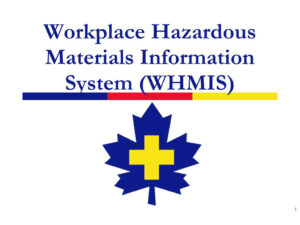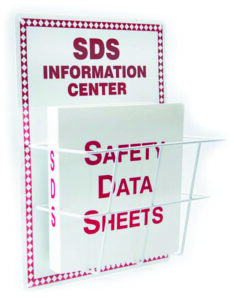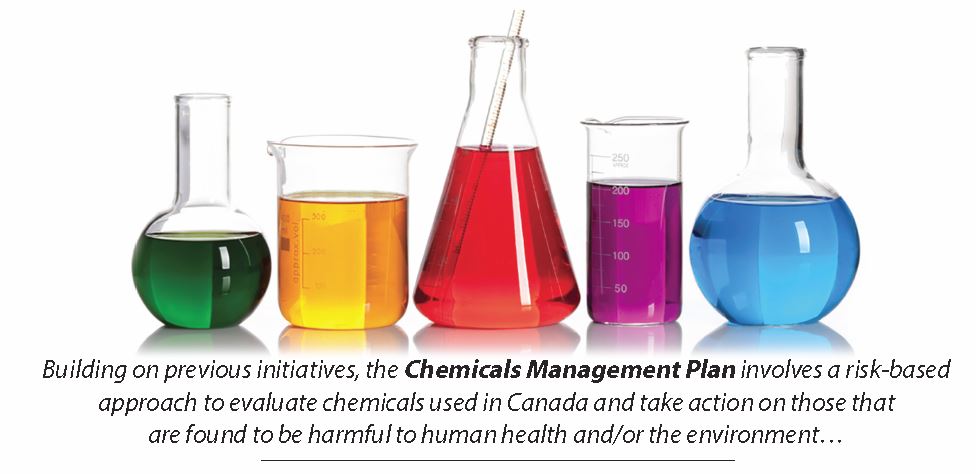Written on: June 1, 2020 by Cassandra Taylor
Canada has strict requirements for hiding chemical information as trade secret on Safety Data Sheets (SDS) for hazardous products. This contrasts with the U.S., where there is no obligation to register Confidential Business Information (CBI) in order to hide it from SDS disclosure.
The Workplace Hazardous Materials Information System (WHMIS) in Canada mandates that suppliers provide employers with information on the dangers of hazardous chemicals produced and used in Canadian workplaces. SDS and workplace labels must comply with the Hazardous Products Regulations (HPR), which sets out the requirements in alignment with the Globally Harmonized System of Classification & Labeling of Chemicals (GHS) 5th revised edition.

A WHMIS-compliant SDS must disclose all relevant hazardous ingredients in the product. If a supplier or employer wants to hide chemical information from disclosure because it is CBI, a claim for exemption must be filed with Health Canada. Health Canada will issue a Hazardous Materials Information Review Act (HMIRA) Registry Number (RN), which must appear on the SDS. The product can then be sold in Canada while withholding the CBI from the public.
HMIRA claim submission involves the following steps:
• sending the product SDS and label (if applicable) associated with the claim;
• completion of the Claim for Exemption Form and the Payment Authorization Form (when paying by credit card); and
• payment of the applicable fee via check, credit card or money order.

New applications are processed within seven business days and a HMIRA RN is issued to the claimant if all requirements are met. The RN may be used on the SDS immediately and it allows the product to be sold within Canada. It takes several months for the application to be fully processed. Timelines vary and providing complete, accurate and timely information will expedite this process.

Depending on the details of the submission, Health Canada may provide a consultation document that outlines findings on claim validity and SDS/label compliance. Claimants are given 30 days to provide a response to the findings communicated in the consultation document. Health Canada reviews any claim amendments and issues a notice of decision to the claimant. Once finalized, the HMIRA RN is valid for three years. If the product formula changes or new information results in a change to the SDS classification, a new HMIRA claim must be submitted.
Amendments to the Hazardous Materials Information Review Act
HMIRA was recently amended and the revisions came into force on March 18, 2020 1. The changes to HMIRA include the following:
• Development of a new publication process to post information about claims for exemption on the Health Canada website. Once this system is finalized, claims for exemption filed under HMIRA will no longer be published in the Canada Gazette.
• Development of a new risk-based approach for the review of SDS and labels. The current review process will continue until the new policy is finalized.
• HMIRA exemptions may now be suspended or annulled if the claim is found to be invalid or if the SDS or labels do not comply with the provisions of the Hazardous Products Act.
• CBI may now be disclosed in certain situations when it is in the interest of human health or safety, or the environment.
• It is no longer required to use registered mail to communicate with claimants. However, correspondence will continue to be sent by registered mail until further notice.
• The Minister of Health has been granted the authority to remit all or part of any fee prescribed under the regulations.
• The HMIRA appeals process was removed and the related HMIRA Appeal Board Procedures Regulations were repealed.
• The responsibilities, duties and authorities of the Screening Officer and Chief Screening Officer have been re-assigned to the Minister of Health and are delegated to the appropriate position in the Consumer & Hazardous Products Safety Directorate.

The templates for the consultation document, decision document and orders used by Health Canada have been updated to reflect the new provisions. However, the process and timelines remain the same as before.
2020 Chemicals Management plan
The Chemicals Management Plan (CMP) 2 is an initiative by the Government of Canada that aims to reduce risks of chemicals to Canadians and the environment. Building on previous initiatives, the program involves a risk-based approach to evaluate chemicals used in Canada and take action on those that are found to be harmful to human health and/or the environment. The third and final phase of CMP, which was launched in May 2016, will address the remaining 1,550 chemicals out of the original 4,300 chemicals that were identified as priorities during categorization. The current program is expected to conclude in March 2021 once all priority chemicals have been assessed.
The Canadian Environmental Protection Act, 1999 (CEPA 1999) instructs that new substances manufactured or imported into Canada above certain thresholds since 1994 must undergo government-led human health and environmental assessment. For substances found to have the potential to pose risks to the environment or human health, control measures may be implemented before they are permitted to enter the Canadian marketplace. If the risks are exceptional, or it is determined that they cannot be adequately managed, the substance may be prohibited in Canada.
Under the CMP, when a proposed draft screening assessment report is released and the substance is found to pose risks to human health and/or the environment, the Government of Canada publishes a preliminary outline of the risk management options under consideration for public comment. Interested stakeholders are invited to submit comments and information that will help inform decision-making as a more detailed risk management approach is developed. The following sections describe draft assessments recently published under the CMP for groups of priority chemicals.
Canada publishes results after Screening Assessment for 15 DSL-listed monoterpenes
In March 2020, Health Canada published draft screening assessments for 15 priority acyclic, monocyclic and bicyclic monoterpenes 3. These substances include such commonly used fragrance ingredients as alpha-pinene, pine oil and lemongrass oil.
It was determined that there is a low risk of harm to the environment from all 15 of these substances. Five of the 15 substances in the group (rose oil, mandarin oil, tangerine oil, turpentine oil and turpentine) were determined to pose a risk to human health at the current levels of exposure. Some of the remaining substances are associated with health effects, but the risk to Canadians is considered to be low at the current levels of exposure.
The 60-day public comment period for this draft screening assessment ended on May 13, 2020.
Plastic pollution
Science Assessment draft published
Plastic has become a pervasive feature of modern society due to its low cost and versatility. Environmental concerns about the slow decomposition of discarded plastic have emerged as a result of its composition of high molecular mass organic polymers. “Plastic pollution” is abandoned or disposed of plastic that is found in the environment outside of a waste management system.
In January 2020, the Government of Canada published a Draft Science Assessment for plastic pollution to summarize the current state of the science regarding the impacts of plastic pollution on human health and the environment 4. The Draft Assessment reviews the available information on plastic pollution, including its sources, occurrence and fate as well as potential effects on human health and the environment. The intention of the assessment was to guide future scientific and regulatory activities on the subject. Various areas are recommended for further research in the assessment, with an emphasis on advancing the understanding of the effects of microplastics on human health and the environment.
The public comment period for the Draft Assessment ended on May 1, 2020. SPRAY
1 link
2 link
3 link
4 link